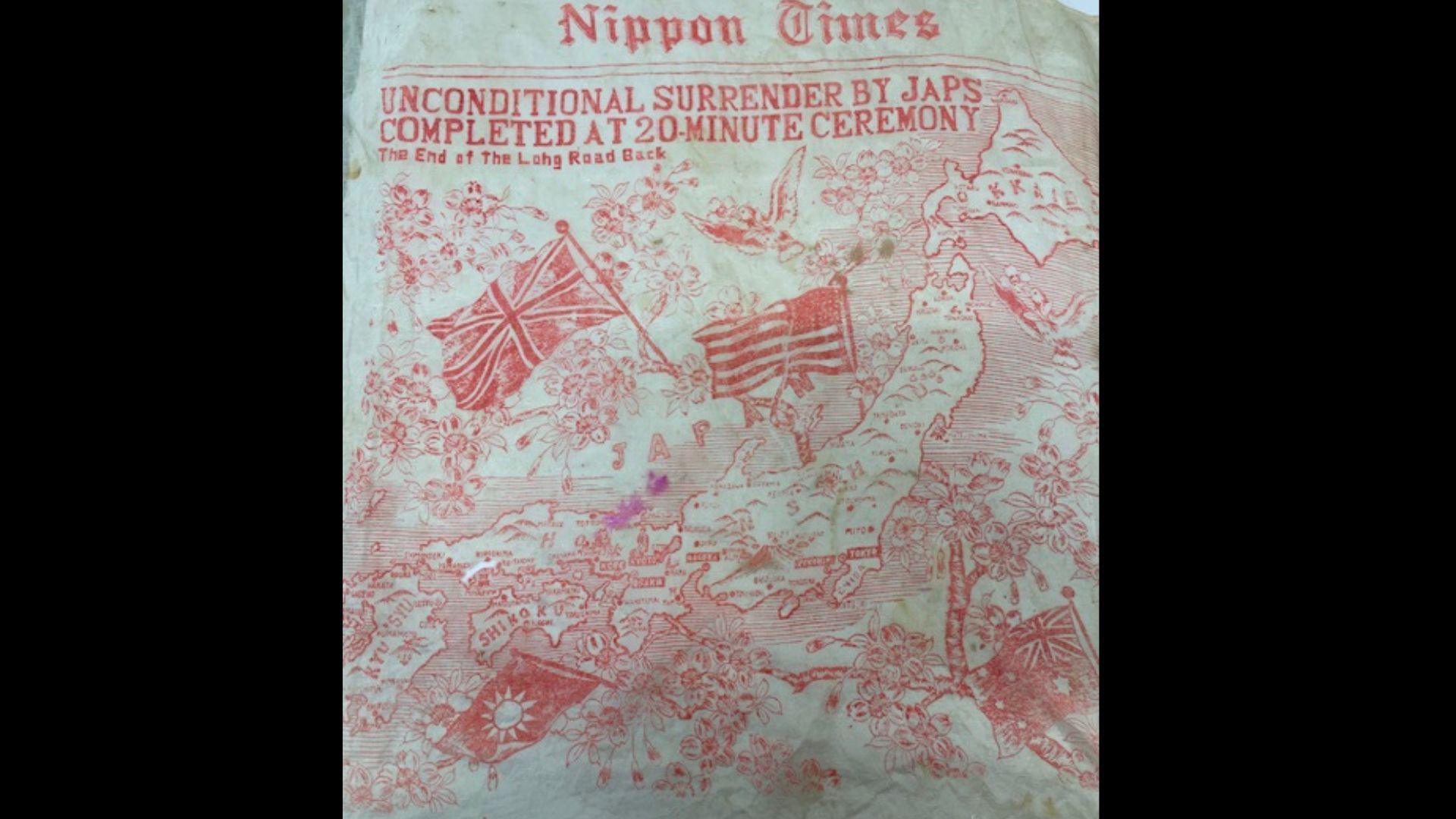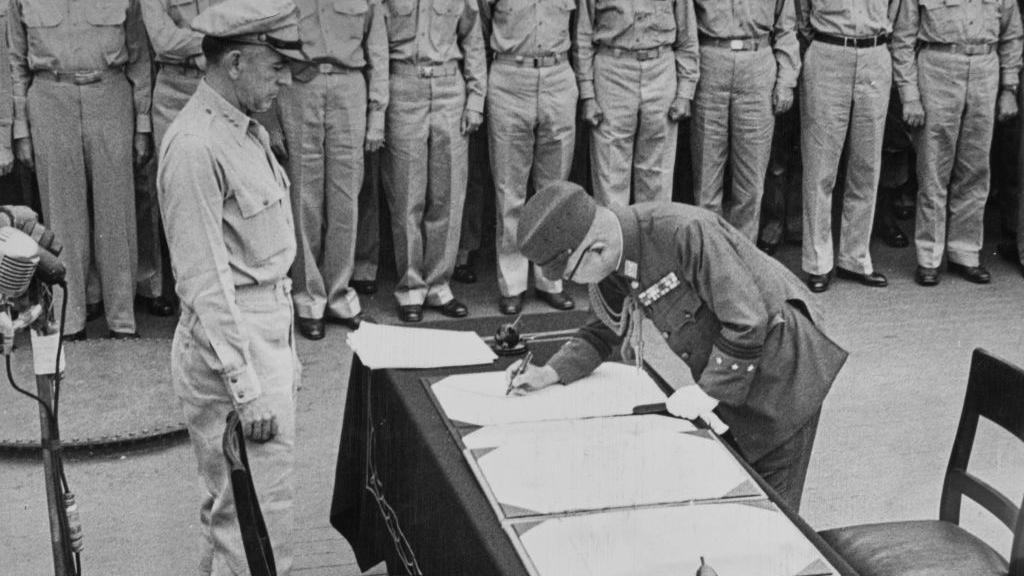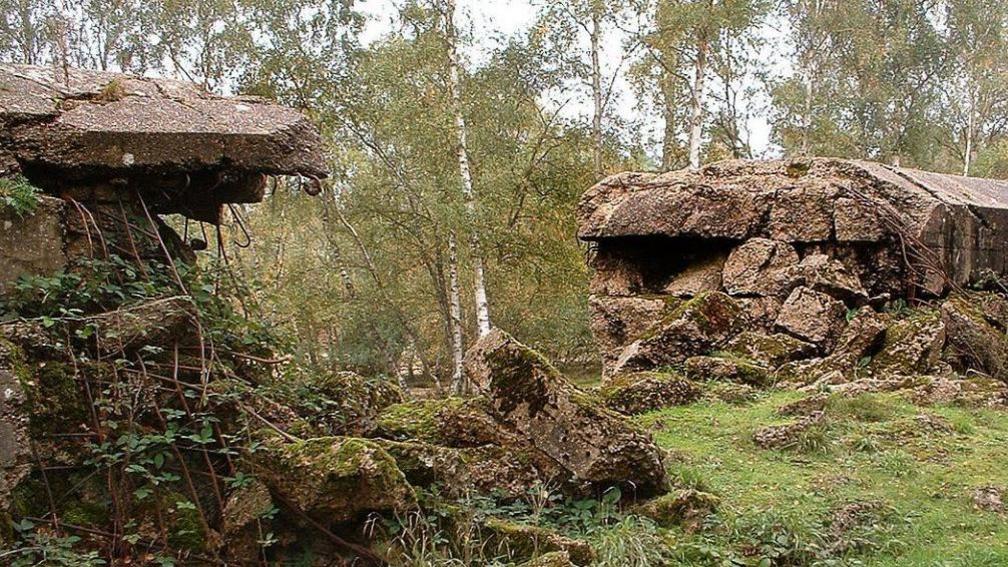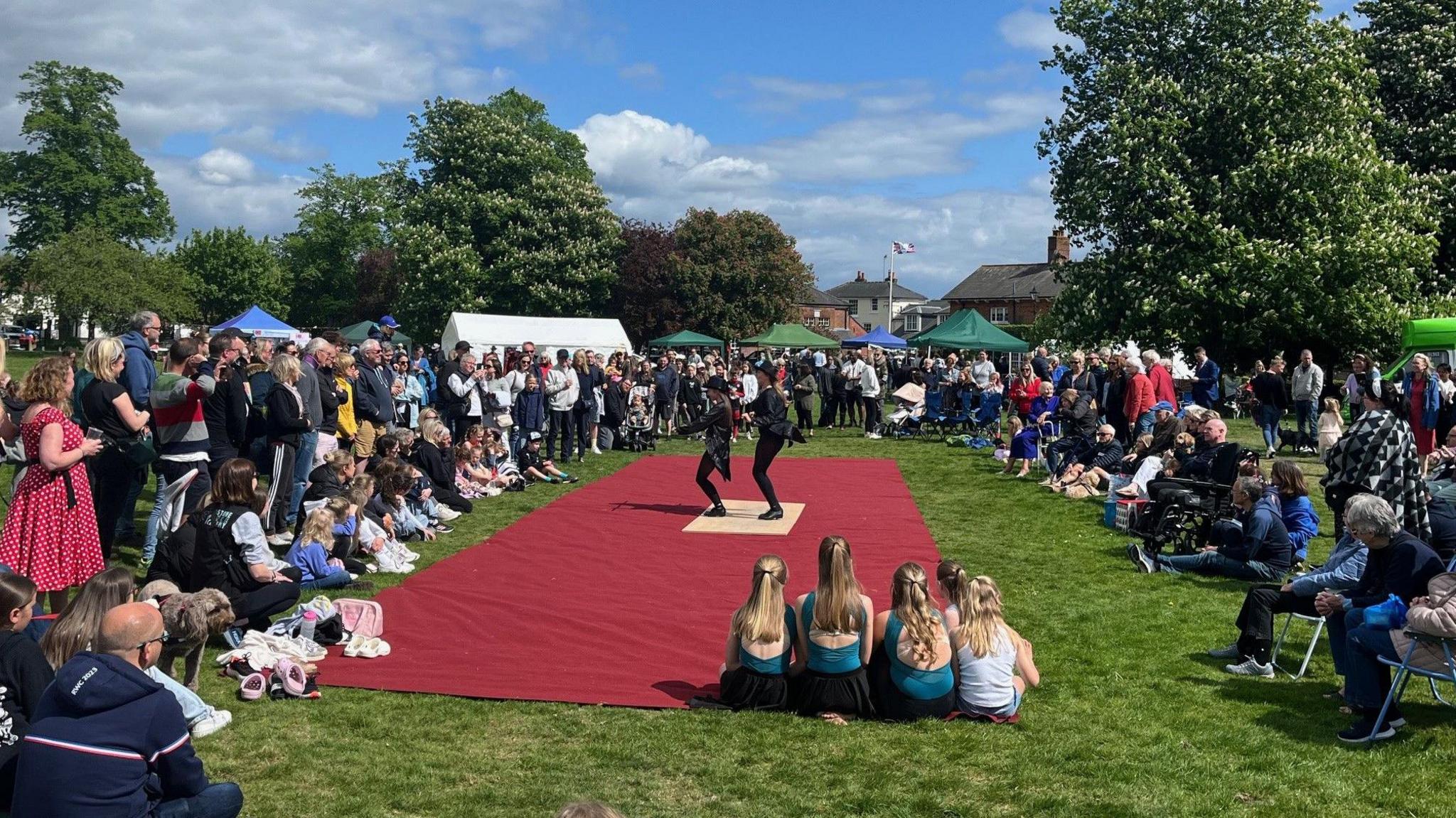Historic handkerchief marking VJ Day on display

East Surrey Museum curator Peter Connelly says the handkerchief is a 'gem'
- Published
To mark the 80th anniversary of VJ Day, a museum in Surrey has shared memories of Allied soldiers who fought in the Far East campaign.
The conflict was brought to a conclusion when two atomic bombs were dropped on Hiroshima and Nagasaki, leading to Japan's surrender on 15 August 1945 - and also ending World War Two.
Now 80 years on, relics from the Far East commemorating the occasion are on display in East Surrey Museum, in Caterham.
One such memento is a handkerchief with a map of Japan printed on parachute silk, donated by the family of Surrey serviceman Robert William Layfield - a navigator who flew to Japan to survey the islands for enemy activity.
'Terrible nightmares'
His daughter Maureen Charman said: "My father undertook other missions, including rescuing naval personnel shipwrecked in the Pacific.
"He had seen kamikaze pilots diving into ships, POWs released from concentration camps and the aftermath of the atomic bombs."
Ms Charman, who lives in Caterham, said he was traumatised by the events.
"He sometimes had terrible nightmares and he suffered from fever due to contracting malaria while fighting in the jungle," she said.
"It took years for the disease to get out of his system."
Curator Peter Connelly said the handkerchief was a "gem".
He added Mr Layfield purchased the handkerchief to wrap some pearls he had bought to take home to his sweetheart when he returned to the UK.
"While many lives were lost ending this war, this was a historic event and needs to be remembered," Mr Connelly said.
He said the design printed on the handkerchief was inspired by the jubilation of the surrender of Japan.
"It is believed the handkerchief was printed after the formal surrender ceremony, which was 2 September 1945," he added.
Mr Connelly believed the handkerchief was printed in the Far East and servicemen took it home with them to remember how they played a role in ending the conflict.

American military officer Richard K Sutherland watches as General Yoshijiro Umezu signs the Japanese Instrument of Surrender on behalf of the Japanese Government, on board USS Missouri (BB-63) in Tokyo Bay, Japan, 2 September 1945
"These items evoke a lot of memories of what it was like fighting and surviving in such nightmarish times," he added.
"They were horrific times, but we owe it to the next generations - educating them so we avoid history repeating itself."
The handkerchief is printed with frangipane blossoms and flags of the nations involved - the UK, USA, Australia and China.
The Chinese flag featured was used by the Kuomintang Party when it ruled China before they were overthrown by the Communist Party in 1949.
Mr Connelly said these handkerchiefs are also in museums in USA, Australia and New Zealand.
According to the Imperial War Museum website, there is at least one such handkerchief in its collection.
Follow BBC Surrey on Facebook, external, on X, external, and on Instagram, external. Send your story ideas to southeasttoday@bbc.co.uk, external or WhatsApp us on 08081 002250.
Related topics
- Published20 July

- Published4 May
